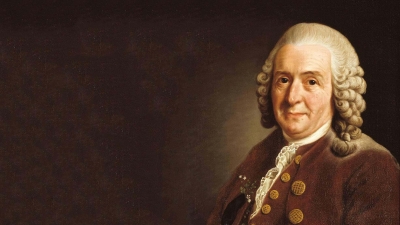
Carl Linnaeus was a Swedish botanist who devised the binomial classification system, a two-part naming system to identify, classify and name organisms from bacteria to elephant. Carl Linnaeus is often called the Father of Taxonomy. His classification, which formed the foundation of our modern taxonomic system, uses the dual “genus, species,” nomenclature to classify organisms. Linnaeus was born in the province of Smaland in Sweden in 1707. His father, a pastor and an amateur botanist, instilled a love of nature in Linnaeus. Carl Linnaeus studied medicine and science at the University of Lund and later in Uppsala University. At the time, training in botany was part of the medical curriculum, as doctors had to prescribe drugs derived from medicinal plants. But memorising scientific plant names was difficult – each plant was known by a long description in Latin.
Carl Linnaeus was keen on finding a way to name species better. In 1732, he travelled to Lapland, in the far north of Sweden, on a six-month long research expedition sponsored by the Uppsala Academy of Sciences. He collected some 400 species of new plants. He made observations of the native plants and birds. All Swedish medical students were required to receive their degrees outside Sweden, so Linnaeus finished his studies at the University of Harderwijk in the Netherlands in 1735. His doctorate was focused on the causes of malaria.
The same year, Carl Linnaeus published his pivotal work of Systema Naturae (“The System of Nature”). He had laid the groundwork for this first edition in a series of manuscripts written over the years. Systema Naturae proposed a radical new approach to the ordering and classification of plants and animals. His system was hierarchically ranked. Organisms were grouped based on morphological traits. At the broadest level, the classification system was divided into three broad kingdoms: animals, plants and minerals (the mineral designation was subsequently dropped). These categories were further subdivided into “classes,” “orders,” “genera,” and “species.”
Linnaeus continued to revise Systema Naturae throughout his lifetime. It eventually grew from 11 pages in the first edition to more than 2,000 pages, as new species were added over time. In 1739 he was among the founders of the Royal Swedish Academy of Sciences in Stockholm. Linnaeus spent many years teaching at Uppsala University. Linnaeus was knighted by the King of Sweden in 1761 and took the nobleman’s name of Carl von Linne.
Picture Credit : Google




